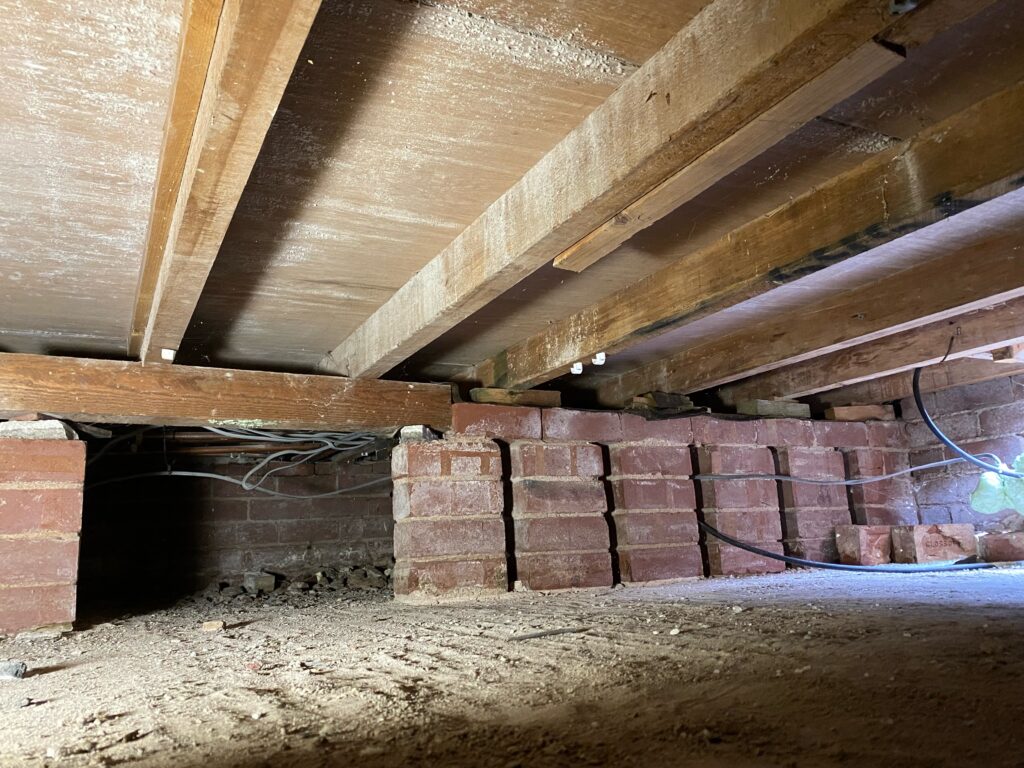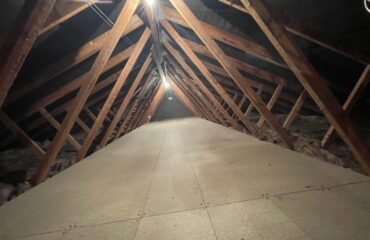Underfloor insulation is an effective way to reduce energy costs and create a more comfortable environment within your home.

Survey says – don’t forget your toes
Underfloor insulation is one of the biggest areas for improvement in your home, yet it is vastly overlooked by most people.
If you were to do a survey about improving insulation within a home, you could guarantee most people would say loft first followed by walls, without giving a thought to the floor. Obviously heat rises, but it doesn’t just rise – it can move in any direction depending on the pressure difference.
Suspended floors – what you need to know
Most older homes, especially those built from the 1900’s through to the 1970’s were built with a suspended timber floor. At the time of construction, these were not considered necessary to insulate. The space below the floor was built as a ventilated space. Airbricks placed in the external walls allow for ventilation and prevent moisture problems within the timbers. However, these airbricks can cause unwanted draughts, making floors cold to touch. This is caused by the floor being exposed to outside temperatures.
An expansion gap runs along the perimeter of the house, allowing the building to expand and contract with seasonal changes to temperatures. This expansion gap can cause draughts to trickle into the main body of the house. As heat rises within the property, this also causes what is know as the stack effect. This is where cold air gets drawn in to replace the warm air as it rises.
Beating the chills
One way to combat cold floors is to insulate them. Using traditional forms of insulation such as fibre rolls, can provide some benefit. However, in the main this is not overly effective. Fibre insulation is not an air barrier material so the cold air circulating below the floor cuts through the material. Its a bit like wearing a woolly jumper whilst stood on top of a windy hill. Although you’ll feel some thermal benefit, the wind will get through the holes that naturally appear. You would be better off with a windproof jacket that is airtight.
The expansion gap is also an issue when using fibre material as you can very rarely get the insulation into the gap with any effectiveness. Fibre materials will require some sort of netting in place to stop the material from falling out of place. This can make it a difficult job to complete. Even when it is possible to net the material in place, it will sag over time and will loose more of its thermal resistance.
PIR Boards – pros & cons
A newer way to insulate a suspended floor, would be to use rigid PIR board insulation. Although ridged board insulation does offer great thermal resistance and the boards themselves don’t allow air to pass through, they have their own set of issues.
To install rigid board effectively they need to be cut to size to fit tightly between the floor joists. The boards usually require to be foamed in round the edges with expanding foam from a can. Leaving as little as a 5% gap round the edge can equate to a 50% loss in thermal efficiency, akin to buying a fridge and leaving the door open, it’s just not effective.
Again, as above the expansion gap is an issue, if not worse when using rigid boards. It’s impossible to get the insulation into the gap effectively and the lack of movement in the board would restrict the properties’ ability to expand and contract.
Leading the way
Open cell spray foam insulation is one of the newest ways to insulate a suspended timber floor and a lot of the issues mentioned with the other two methods are mitigated. Open cell foam is a breathable material. It will allow timbers to continue to breathe as they should. As long as the air bricks are left clear this will prevent issues with moisture.
Open cell foam will stick directly to the underside of the floorboards, meaning you don’t need any type of fixing to hold it in place. It will not sag or degrade over time and comes with a 25 year warranty.
Open cell foam expands 100x on application. This makes it easy to fill the expansion gap and eliminate draughts. Open cell foam does not set hard and remains soft and flexible so filling the expansion gap is viable as it still allows expansion and contraction moving with the seasonal changes.
Open cell – gets our vote
With all this said, hopefully it gives you a good insight into why we believe open cell foam is the most effective solution for insulating a suspended timber floor.
We have been insulating suspended timber floors since 2016 with great effect and amazing feedback from our clients. Some clients report energy savings of 30% and all of our clients saying what a noticeable difference it has made to the comfort of their home.


